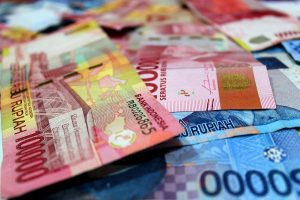March was a precarious time for the finances of emerging markets, as panicked investors rushed into the perceived safety of the U.S. dollar. The Institute of International Finance estimates that $83.3 billion in stocks and bonds were sold off in emerging markets during the month of March, and economies in Southeast Asia running current account deficits were particularly hard hit.
Capital outflows of this scale have two main effects. The first is that local currencies lose value against the dollar and as the dollar is the global reserve currency, international transactions become increasingly expensive. Entities that collect revenue in local currency, but have to service loans or settle transactions in dollars, are suddenly faced with increasing costs that are mainly beyond their control.
The second effect is that it becomes more difficult to raise capital. As demand for bonds drops, yields will rise to the point where it becomes prohibitively expensive to issue new debt, if a market exists for it at all. For governments this paradox was compounded in March by the fact that right when they needed funds to avert economic disaster, the structure of global capital markets made it very difficult for them to raise it.
The situation began to stabilize in April, after the U.S. Federal Reserve launched an aggressive rescue effort. This relieved pressure on the dollar, and capital flows to Southeast Asia in particular have more or less recovered. This is important, as most countries are being forced to run fiscal deficits in order to keep their economies alive during the pandemic, and doing so requires them to issue debt.
Writing in East Asia Forum, analyst Brad Setser concludes that “Asian countries… are well-suited to handle this increase in public debt — with some exceptions.” The main exception he is talking about is Indonesia.
Governments have two basic options when issuing debt. They can sell bonds that are payable in foreign currency (usually dollars), or in their local currency. If they sell dollar bonds they are exposed to external shocks to the exchange rate. At some point it simply becomes impossible to service external debt if the value of your currency keeps falling.
Bonds payable in local currency do not have that problem – the government can always make the payment, and it is the creditor who assumes the risk of currency depreciation. However, as Setser also points out “the flight of foreign investors out of the local bond market can generate volatility.” Rupiah bonds are a cushion against currency shocks, but are also more vulnerable to the whims of global capital flows. If Indonesia issues too much rupiah-denominated debt, demand might fall and drive up yields. If market sentiment turns, as it did in March or during the Taper Tantrum of 2013, investors might dump bonds leading to capital outflows. Balancing all of these considerations during a pandemic is an especially difficult task.
Policymakers in Jakarta have come up with a bold solution – they are going to monetize a portion of their public debt, much like Europe and the United States are doing. Indonesia’s fiscal deficit in 2020 is expected to rise to 6.34 percent of GDP, and the Ministry of Finance and Bank Indonesia recently agreed on a “burden sharing scheme” to fund it. Bank Indonesia has agreed to directly purchase 397.5 trillion rupiahs (approximately $27 billion at current rates) of government bonds. They began the first purchases in August, with the proceeds earmarked specifically for the fight against COVID-19.
The main concern is that this unconventional monetary policy will spook investors and start another round of capital flight. After all, the Finance Ministry still needs investors who are willing to buy government bonds as the burden sharing scheme won’t cover the entire deficit. This appears to be a calculated gamble by Finance Minister Sri Mulyani Indrawati and Bank Indonesia Governor Perry Warjiyo – they have likely concluded that despite this unconventional policy move low interest rates in Europe and the United States will nevertheless push capital flows into Indonesia, where the benchmark interest rate remains relatively attractive at 4 percent. This will give them the space in the short term to ensure the deficit is fully funded, at the rates they want to pay, without placing them entirely at the mercy of market forces.
Monetization of public debt is a controversial topic, particularly when it comes to emerging markets. But authorities in Indonesia have made clear this is a gamble they are willing to take during an extraordinary time. If Indonesia’s monetary experiment achieves all of its goals – funding the deficit at an affordable rate, without sparking capital flight or debasing the currency – it could hold important lessons for other economies in the region looking to plug their own fiscal holes, as well as conventional wisdom on the relationship between emerging markets and public debt.
































